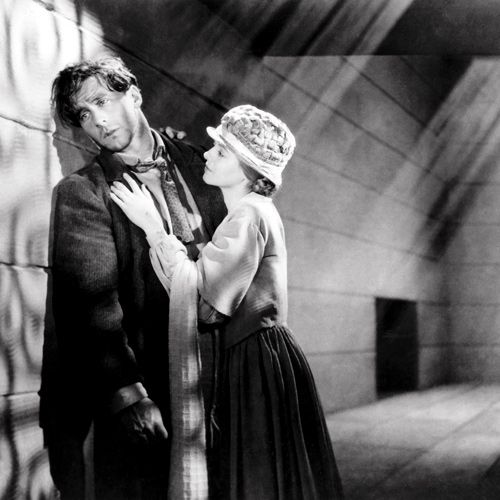



The depth of composition of a shot, i.e., where there are several planes (vertical spaces in a frame): (1) a foreground, (2) a middle-ground, and (3) a background depth of field specifically refers to the area, range of distance, or field (between the closest and farthest planes) in which the elements captured in a camera image appear in sharp or acceptable focus as a rule of thumb, the area 1/3 in front of and 2/3 behind the subject is the actual distance in focus depth of field is directly connected, but not to be confused with focus Example: Extreme depth-of-field in many shots in Citizen Kane (1941) to heighten dramatic value, achieved by using very bright lighting and a slightly wide-angled lens by cinematographer Gregg Toland, causing objects or characters close in the frame's foreground to appear massive, while other objects appear smaller in the background other scenes with extreme depth-of-field include the early snowball scene, the 'Crash of '29' scene, and Susan's overdose sceneĮfers to a moving shot in which the perspective of the subject and background is changed the shot is taken from a camera that is mounted on a hydraulically-powered wheeled camera platform (sometimes referred to as a truck or dolly), pushed on rails (special tracks or dolly tracks) and moved smoothly and noiselessly during filming while the camera is running the dolly carries the camera equipment and often some of the camera crew - and occasionally the director a pull-back shot (or dolly out) is the moving back ('tracking back') of the camera from a scene to reveal a character or object that was previously out of the frame, dolly in is when the camera moves closer ('tracking in') towards the subject, and dollying along with (or 'tracking within') refers to the camera moving beside the subject also known as tracking shot, trucking shot, follow shot, or traveling shot contrast with zoom shots.Įxamples: the first eight minutes of Robert Altman's The Player (1992) was filmed with a sustained dolly shot, similar to the famous opening sequence (shown here) of Welles' Touch of Evil (1958) or the opening shot in Boogie Nights (1997) that tracked into the 70s disco, or the shot from the dressing room to the ring in Raging Bull (1980)Ī French phrase literally meaning "black film" that developed in the early 40s refers to a genre of mostly black/white films that blossomed in the post-war era in American cinema, with bleak subject matter and a somber, downbeat tone the plot (often a quest), low-key lighting (harsh shadows and chiaroscuro) often in night scenes, camera angles (often canted or high angle shots), the setting (the gloomy underworld of crime and corruption), iconography (guns, urban settings), characters (disillusioned, jaded), and other elements (voice-overs and flashbacks) combined to present a dark atmosphere of pessimism, tension, cynicism, or oppression.
#Sunrise murnau scaffolding design code#
An off-beat, low-budget, second-tier film, usually from an independent producer they were predominant from the 1920s to the late 1940s they were shot quickly with little-known, second rate actors, short run times, and low production values often the second film (or the 'lower half') of a double-feature, and paired with an A-feature the vintage B-movie began to decrease in the 50s, or morphed into inferior TV series sometimes B-films were exclusively shown in a grindhouse, especially in the 50s and 1960s as code restrictions waned in the late 60s, B-films often became exploitation films, which added sensational and catchy titles, campy acting, cheesy special effects, and gratuitous violence and sexuality (nudity) contrast to A-pictures (first-class, big-budget films with high-level production values and star-power) not to be confused with cult films, although some B-films attained cult statusĮxamples: John Wayne (Roy Rogers, Gene Autry, B-westerns, B-movie serials, Fox's Charlie Chan mysteries, Monogram's Bowery Boys comedies, and Universal's Ma and Pa Kettle and Sherlock Holmes, The Ghost of Frankenstein (1942), a typical low-budget, sci-fi B-movies of the 50s - The Beast with 1,000,000 Eyes (1955), and Teenagers From Outer Space (1959) also Edgar G.


 0 kommentar(er)
0 kommentar(er)
